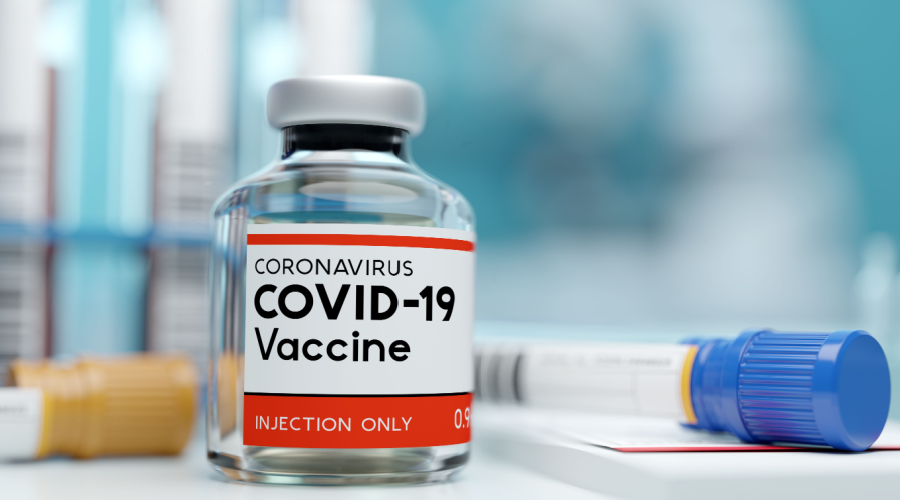Whether you just opened your first independent community pharmacy or you’ve been in the business for years, having a solid business strategy is essential to growing your pharmacy.
When strategizing how to grow your pharmacy, you should create a foundation for your business and set expectations that will allow you to track your success. Ultimately, your chosen strategies should be part of an ongoing process that helps you manage your business better.
Implement these 10 fundamental business strategies to grow your independent community pharmacy business.
1. Create a mission
To keep your business on the path to success, create a clear mission statement. A mission statement is short — only about 100 words — and it expresses a timeless encapsulation of what your pharmacy stands for.
A mission statement should lay out what you do beyond the surface level, prioritizing what makes your pharmacy unique. If you want to always have low prices or consistently provide great customer service, that should be in your mission statement.
Reflect on your patients as you write your mission statement and describe how you can improve their quality of life.
2. Conduct a SWOT analysis
The SWOT analysis is a classic business exercise that can help you pin down how your pharmacy can thrive, as well as the struggles it might encounter on the way.
It stands for Strengths, Weaknesses, Opportunities, and Threats. To complete the exercise, identify items in each of these categories.
Strengths and weaknesses are internal characteristics of your pharmacy that you can control, while opportunities and threats are external characteristics that you can’t control but need to be aware of.
Once you’ve conducted the analysis, you can make better, more informed decisions about your pharmacy business.
3. Set SMART goals
If you’re taking your business day-by-day, you may get your patients their medications, but you won’t be able to grow your pharmacy.
Instead, set concrete goals that will help you improve your pharmacy. Your goals should follow the SMART formula, which stands for:
- Specific
- Measurable
- Achievable
- Relevant
- Time-bound
Spelling out what you want to accomplish and how can help you live up to your mission statement and become a better pharmacy for your patients.
Generally, a good business goal will fall under one of these four categories:
- Profit
- Growth
- Customer service
- Community
4. Track metrics
To actually achieve the goals you set, you have to keep yourself accountable. Keeping track of basic pharmacy metrics is one of the best ways to do that.
By tracking metrics, you’ll have a clear idea about the direction your business is headed and where you need to make adjustments. Common metrics to track include:
- Average prescriptions filled per day
- Gross profit margin
- Payroll expenses as a percentage of sales
- Inventory turnover
- Net worth ratio
If you keep up with each of these metrics, you will be able to identify potential weak spots in your business so you can decide how best to focus your energy.
5. Master cash flow
One critical skill for keeping your business up and running is mastering your cash flow. When you have a good handle on your cash flow, you’ll have more money to a use on your business, whether that’s to pay bills or re-invest in new pharmacy services.
Timing is crucial for cash flow. When you make a sale at the register but it hasn’t yet arrived at the bank, you can’t access or use that money.
To minimize the amount of money you have tied up, you can take steps like collecting promptly on your receivables, improving your inventory management, and choosing a POS vendor that converts sales to cash quickly.
6. Control expenses
Far and away, your inventory costs have the greatest impact on your pharmacy’s profitability. For every business, the less you pay for your goods, the more profit you earn. But for pharmacy, controlling expenses is especially important because of how little control you have on the sell-side of your business.
Getting the most favorable terms on your primary wholesaler contract, maxing out your rebates, and balancing your purchases from secondary suppliers are all great ways to keep your total cost of goods low and profits high. But achieving all those goals is nearly impossible for a busy pharmacy, given how complicated the terms are in every contract and how every single purchase decision affects your rebates.
ProfitGuard®, a different take on a buying group, ensures pharmacies get the best costs of goods possible. It guarantees a better contract than you have now (an actual guarantee), and it offers a proprietary analytic tool to help pharmacies maximize wholesaler rebates and savings on their inventory every day. By automatically analyzing every purchase and every contract incentive to ensure every drug you buy from your primary or secondary wholesaler results in maximal rebates and savings, the tool gives you the lowest net cost of inventory for your pharmacy. For the average pharmacy, receiving your full rebates and savings could result in tens of thousands of dollars per month in pure profit.
“It’s the industry game changer for the independent pharmacy owner or operator,” says Huy Duong, owner of Dale’s Pharmacy in Colorado. “There’s nothing out there like it on the market.”
Getting the most out of your primary wholesaler contract is the best way to manage your cost of goods, but there are times when your primary wholesaler might not have the best price or might be out of the NDC you need. When these situations inevitably arise, you need to have a reliable secondary supplier to help keep your cost of goods manageable.
BuyLine®, an NABP-accredited secondary supplier, offers a full line of brands, generics, OTCs, and controls at the lowest prices in the secondary market. In addition to having low list prices, BuyLine also rewards purchases with cash rebates and significant discounts on brands. Earn up to an additional 10% cash rebate on generics and up to WAC -4% on brand.
7. Hire smart
You might have the lowest prices and the best product selection, but if you don’t have the right pharmacy team to help you deliver, those things won’t matter.
Focus on hiring the right people for your pharmacy. When you have a new position, cast a wide net to ensure you’re reaching the right candidates. Find candidates who have the right credentials, but also look for soft skills and other non-tangibles.
And before you extend a job offer, be sure to check for any potential red flags.
8. Plan for emergencies
Even the best-laid plans sometimes go awry, and to keep your pharmacy running smoothly, you have to plan for the unplannable.
Put procedures in place to ensure your business can survive an emergency.
This includes building up a cash cushion so you have a little wiggle room with your finances. A good rule of thumb is to have two weeks of wholesale bills plus two weeks of payroll divided by two in your savings account.
You should also have the proper insurance for any type of unexpected emergency:
- Vehicle
- Cyber
- Property
- Casualty
9. Be a leader
Managing the daily operations of your pharmacy can be a tough gig, but you also have to manage the people in your pharmacy.
Be a strong leader to keep your employees engaged. In turn, they will be happy in their jobs and pass that happiness along in the form of great customer service.
A good leader doesn’t micromanage their employees, and they communicate their expectations clearly. When employees are struggling, great managers deliver feedback in a friendly and constructive way.
Treat all your employees fairly in order to foster a team environment. A great manager and work environment will motivate employees to do their jobs well.
10. Look for new opportunities
One of the advantages your independent operation has over the big box stores is the ability to implement quick change.
Stay open to new opportunities and ideas. If you learn about something exciting that you think could make a difference for your patients, test it out.
To find out about potential opportunities, read industry publications (subscribe to Elements!) and attend continuing education events. Educating yourself about the industry will help you stay on the cutting edge and one step ahead of the Goliath chain stores.
A Member-Owned Company Serving Independent Pharmacies
PBA Health is dedicated to helping independent pharmacies reach their full potential on the buy-side of their business. Founded and run by pharmacists, PBA Health serves independent pharmacies with group purchasing services, wholesaler contract negotiations, proprietary purchasing tools, and more.
An HDA member, PBA Health operates its own NABP-accredited warehouse with more than 6,000 SKUs, including brands, generics, narcotics CII-CV, cold-storage products, and over-the-counter (OTC) products — offering the lowest prices in the secondary market.












